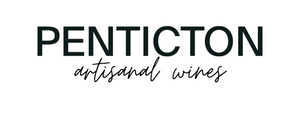It is officially the “wedding season”.
A celebration of love, happiness and partnership. The perfect occasion to cherish friends and family. So what better way to enjoy the festivities than with the effervescence of Champagne? Synonymous with celebration, the popping of Champagne is always guaranteed to make any event special. However, as much as traditional Champagne is a symbol of elegance and conviviality, have you ever decided instead to THINK PINK? Despite taking a slight back seat in recent decades, Rosé Champagne is making a big comeback. From the Montagne de Reims to the Côte des Bar, numerous domains are choosing to expand their repertoire with a splash of colour!
Be My Valentine
There’s method in the…Rosé
The colour of Rosé Champagnes can vary from dusty rose, to salmon orange, and all the way to a deep punchy pink. Each variation has its own character profile. It is the choice of the winemaker to decide what sort of style they want to produce. This decision depends on grape variety, terroir, and ultimately the method of production. The region of Champagne is unique for many reasons, and rosé is no exception. There are two main methods used in the production of rosé Champagne. The first and most common is the blending method, and Champagne is the only AOP in France which is allowed to use this technique to make its pink Champagne.
White + Red = PINK
The region of Champagne is predominantly known for its sparkling wine, however still wine can also be produced under the AOP of Coteaux Champenois. Winemakers will often make a still red cuvée, which they can either bottle as a red wine, or blend with a white wine to create a rosé. On average a winemaker will add between 10-20% red wine to give the desired aromas, texture and colour to their rosé. This blended rosé is then bottled and goes through a second fermentation to become a sparkling wine. The red to white ratio all depends on what style of rosé a winemaker desires. The more red they add the more the rosé will be structured and fruity, often bringing complex aromas and a darker pink colour. However, in recent years there has been a fashion for lighter salmon coloured rosés.
The second rosé method permitted in Champagne is the saignée method. Saignée literally translates as bleeding, and is a technique used widely around the world to make still rosé. A winemaker will harvest a red variety such as Pinot Noir, and during the vinification they will allow the clear juice to macerate in the red skins of the grapes. The maceration transfers colour, aromas, and tannins. If the winemaker was to leave the juice with the skins for a long time they would get a red wine. Imagine tea left to infuse in hot water. The longer it infuses the stronger the tea will be. The same principle applies to the saignée method. Therefore, if a winemaker wants to produce a rosé they will only allow a short maceration, checking every hour until the rosé has reached the desired level of infusion. This can be anything from 2-20 hours, ranging from light to dark rosés. Saignée rosés tend to be fruitier and have a light tannic structure.
Get Boozy in Bouzy
Bouzy in the Montagne de Reims is one of the 17 Grand Cru villages within the Champagne region. As well as producing prestige sparkling wines, they are also well known for their still red Coteaux Champenois. This means one thing: rosé. Since the 17th century, domain Lucien Collard have honed their techniques to produce exuberant Champagnes. Their 2015 Grand Cru Rosé Champagne, a blend of 10% Chardonnay, 90% Pinot Noir (with 15% Bouzy Rouge), is a perfect example. With complex aromas of summer berries and wild meadow flowers, this rosé is texturally rich with extremely fine bubbles. A bottle of Bouzy rosé is the perfect companion to a seafood platter of lobster and oysters.

Lets go to the Bar…The Côte des Bar
The Côte des Bar in the southern part of Champagne has so many hidden delights on offer. One of these is none other than Champagne Gruet. Claude Gruet and his family use their special clay and limestone terroir to give a crisp refreshing minerality to their wines. This allows them to produce an intensely fruity yet balanced blend of Pinot Noir and Chardonnay. An explosion of fresh ripe strawberries and raspberries, this cuvée is delicious with roast chicken and slow roasted confit tomatoes.

Premier league Rosé
Champagne Monmarthe, produced since 1737, has 15 ha in the 1er Cru village of Ludes in the Montagne de Reims. They carefully choose a blend of 40% Pinot Noir, 40% Meunier, 20% Chardonnay and 10% of their own still red Coteaux Champenois to produce a delicate salmon pink rosé. The blend of the three varieties gives darker fruit flavours of black currents, cherries, and plums, with the aromatic elegance of hawthorn, honey and lilac. Fresh, lively and refined this rosé would pair perfectly with a blackberry panna cotta.
Think Pink…Outside of the Box?
If you are feeling adventurous and looking for something more affordable, you should try a rosé Crémant. There are many interesting and varied crémants to be discovered across France, however the coral pink Crémant de Bourgogne from Regis & Sylvain is a particularly expressive Saignée alternative to a traditional Champagne Rosé. A philosophy of innovation is key to the partnership between negotiants Regis & Sylvain. Sourcing their Crémant from the Mâconnais region of southern Burgundy, they offer a vinous yet fresh sparkling rosé, packed with red fruits, peach and saffron. Delicious with a tuna sashimi adorned with pomegranate fruit.

Whether it’s to be Crémant or Champagne, a sparkling rosé is a wonderful way to capture the joy and conviviality of any event. If it is your special day, THINK PINK!
About our contributor - Harriett Gifford is a freelance English writer based in Paris, France. A classicist, graduate of Le Cordon Bleu and a lover of natural wine.




